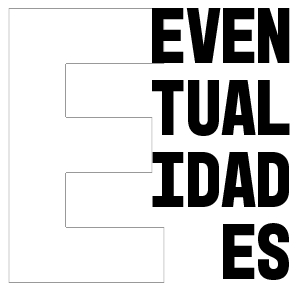presented at the Besides the Screen 2020 conference
Audiovisual languages have experienced several technological cycles, each carrying its own set of syntaxes and critical approaches. From the appearance of cinema to the invention of television, and from the adoption of video to the dissemination of digital technologies, a number of logics of framing, editing and screening surfaced, merged, changed, disappeared, resurfaced, reappeared and transformed again. The usual approach to audiovisual histories tend to separate such ocurrences as different languages, as if cinema, TV, video and digital experiences had more differences than similiarities, and discontinuities were more relevant than continuities. As a matter of fact, history and culture are less regular and linear than people usually assumes, but that does not mean that events can be threaded in coherent, or at least arbitrarily ordered ways.
Recently, some authors have been proposing transversal readings of audiovisual histories, that goes beyond the assumed separation between cinema, TV, video and digital languages. One good example appears in the set of books labeled Audiovisuology, edited by Dieter Daniels and Sandra Naumann as a result of the See this Sound exhibition. Aiming to focus on less hierarchic dialogs between sound and moving image, both books focus on pieces that range from epoch and materialities result in another compreension of audiovisual languages.
This does not happen merely because of an interest in works that were created in film, video or digital materialities, but also because of a focus on experiences that are not usually accounted on more estabilished histories of audiovisual languages, such as visual music or live audiovisual performances. The efforts to examine this less well-know repertoires has also implications for the vocabularies used to discuss such works.
On an article about the challenges of critically adressing video art, Philippe Dubois manifested the need to use new words to talk about the new articulations of image and sound that video invented. Mixing and inserting portions of images into each other were new possibilities that changed the logic of creating frames, whereas so far montage was much more about sequencing rather than compositing.
The research that I am preseting here draws on that logic, with a subtlety. It supposes that audiovisual languages accumulate in layers, thus what was relevant for cinema continues relevant for TV with changes and novelties, and what was relevant for cinema and TV continues relevant for video with changes and novelties, and so on and so forth. Thus, all vocabulaires that were created for film and video analysis is relevant to understand other, more experimental AV languagens, such as visual music and audiovisual performance. But some words are specific and eventually they can even work reversely, to broaden ways to discuss film and TV, for example.
With that, from now on we will present a critical repertoire of examples that aim to reveal this vocabulaires that are useful for experimental audiovisual criticism, based on an effort to identify then in pieces that were created on all three main technological cycles that dominated audiovisual languages (analogic, electronic and digital).
_ spatial montage / ambience
_ loops / microcuts
“A rose is a rose is a rose” Gertrude Stein
“No meio do caminho tinha uma pedra
tinha uma pedra no meio do caminho
tinha uma pedra
No meio do caminho tinha uma pedra
Nunca me esquecerei deste acontecimento
na vida de minhas retinas tão fatigadas
Nunca me esquecerei que no meio do caminho
Tinha uma pedra
Tinha uma pedra no meio do caminho
No meio do caminho tinha uma pedra”
(Drummond)
“Through subtle variations and repetitive loops, Stein’s plays, ‘similar to the later minimal music’, seem to make no progress and yet undergo subtle change” (Rebentisch, Aesthetics of Installation Art, p. 153-4).
_ masks
masks are also used intensily in narrative formats, for example Hitchcock´s the Birds, but in experimental languages it does not aim for transparency.
_ estroboscopic / pulse
_ generative
_ remontage
_ materials
